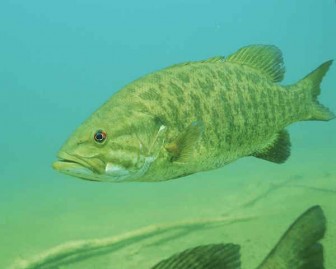Water News from Near and Far - March 2016
Water News from Near and Far

Supreme Court Refuses to Hear Chesapeake Clean-up Challenge
For five years the Farm Bureau has been seeking to block the implementation of an ambitious Chesapeake Bay clean-up effort developed by the Environmental Protection Agency (EPA). They have argued that EPA exceeded its authority in developing the plan and that clean-up efforts needed to be left to the states. In late February they met their final road block when the federal Supreme Court refused to even hear their challenge. In doing so, the Supreme Court left in place a lower court decision that concluded EPA’s plan, “is reasonable and reflects a legitimate policy choice.”
The Chesapeake clean-up plan is very similar to and provided a framework for the Total Maximum Daily Load (TMDL) plan EPA proposed for Lake Champlain.
The lawsuit was supported by 92 members of Congress, 22 states and several business trade groups that filed briefs asking the court to review the case. However, none of the states in the Chesapeake watershed supported the suit. Supporters of the TMDL noted that the plan was developed in collaboration with the states, rather than imposed by EPA.
With the lawsuit out of the way, the real challenge of implementing the TMDL still looms.

PBDE Levels Increase in Lake Erie Smallmouth
Polybrominated diphenyl ethers (PBDEs) are flame retardants that were commonly used in furniture, electronics, construction materials and textiles. Production of the chemicals was discontinued in 2013, yet they persist in the environment. While levels of PBDEs are expected to decline in most Lake Erie fish species, that’s not the case for smallmouth bass. A model published in Environmental Pollution predicts PBDE levels will increase in smallmouth by almost 48% in two years.
PBDEs can be transferred through the food chain. Invasive species, zebra mussels and round goby (a fish), prevent the PBDEs from settling into sediment. The filter-feeding mussels ingest PBDEs, get eaten by gobies, and then smallmouth eat the gobies and PBDEs accumulate with each step.
PBDEs have many potential health effects according to Michael Murray, staff scientist with the National Wildlife Federation, and Joshua Wallace, an author of the study. They have been linked to hypothyroidism, neurotoxic damage and cancer. They can pass through breast milk to infants. Children exposed to high levels of PBDEs in the womb have decreased IQ and increased hyperactivity.
“It’s going to take a while before the levels [of PBDEs] drop down to below levels of concern,” Murray told the news site Great Lakes Echo.

SolarBees Fail to Prevent Algae Blooms in North Carolina Lake
People are always searching for engineered solutions to prevent blue-green algae blooms. One such idea is installation of solar powered water circulators, commercially called SolarBees. The idea is that circulating water will prevent the development of blooms. Unfortunately, that doesn't appear to be the case. The North Carolina Department of Environmental Quality studied an installation of Solar Bees on Jordan Lake for two years, and concluded the tool doesn’t work.
Authorities hoped installing the water circulators would be cheaper and more effective than trying to reduce nutrient loading to the lake. In 2009 North Carolina passed rules that would have required developers and local governments to spend hundreds of millions to limit nutrient pollution. They later postponed implementation of those rules in the hopes that a $1.4 million investment in SolarBees would address the problem. Nonetheless, the North Carolina legislature has extended the experiment until 2018.
This isn’t the first time SolarBees have been proposed to deal with algae blooms. In 2007 units were deployed in St. Albans Bay in hopes that they would clear 100 acres at the northern end of the bay. There was no evidence that the SolarBees reduced algal concentrations, improved water clarity, or inhibited blue-green algae in the bay.
There are no quick fixes from the problem of blue-green algae blooms. Controlling nutrient imports remains the one potentially viable strategy for dealing with the issue.

Record Low Levels of Arctic Sea Ice
Arctic sea ice usually hits its maximum around mid-March. For the second year in a row, that maximum was smaller. The peak was 5,000 square miles smaller than last year’s low maximum and 431,000 square miles lower than the average peak between 1981 and 2010. The 13 smallest maxima on record have happened in the last 13 years.
Though the amount of sea ice can vary dramatically from year to year, researchers are seeing a “significant downward trend,” according to NASA Arctic sea scientist Walter Meier. He notes that ocean temperatures are warming in addition to (and because of) the warming atmosphere. Record warmth occurred in ten months of 2015. Only January (second warmest) and April (third warmest) failed to set new records. This was the highest temperature for an 12-month period ever recorded.
“In places where sea ice has been lost, those areas of open water will put more heat into the atmosphere because the air is much colder than unfrozen sea water,” said Jennifer Francis, a climate scientist at Rutgers University. “As winter sea ice disappears, areas of unusually warm air temperatures in the Arctic will expand. These are also areas of increased evaporation, and the resulting water vapor will contribute to increased cloudiness, which in winter, further warms the surface.”

Credit: The University of Melbourne.
Twenty New Fish Species Found in Australia
There’s so much about the natural world we still don’t know. Field biologists in Australia discovered twenty new species of fish in nine months of fieldwork between 2012 and 2014. They sampled just 17 rivers in the province of Kimberley, a region in northwestern Australia on the Indian Ocean.
The work increased the number of known fish species in Australia by almost ten percent. Twelve of the twenty species were found during a three-week period when researchers took helicopters to some of the more remote rivers.
Australian field work presents particular challenges – both meteorological and biological. The Kimberley region has a tropical monsoon climate and 90% of the region’s rain falls between November and April. Average temperatures in the region exceed 80 degrees F and frequently exceed 100 degrees on the coast and 104 inland. On the biological side, one of the researchers was attacked by a freshwater crocodile while snorkeling in search of fish.